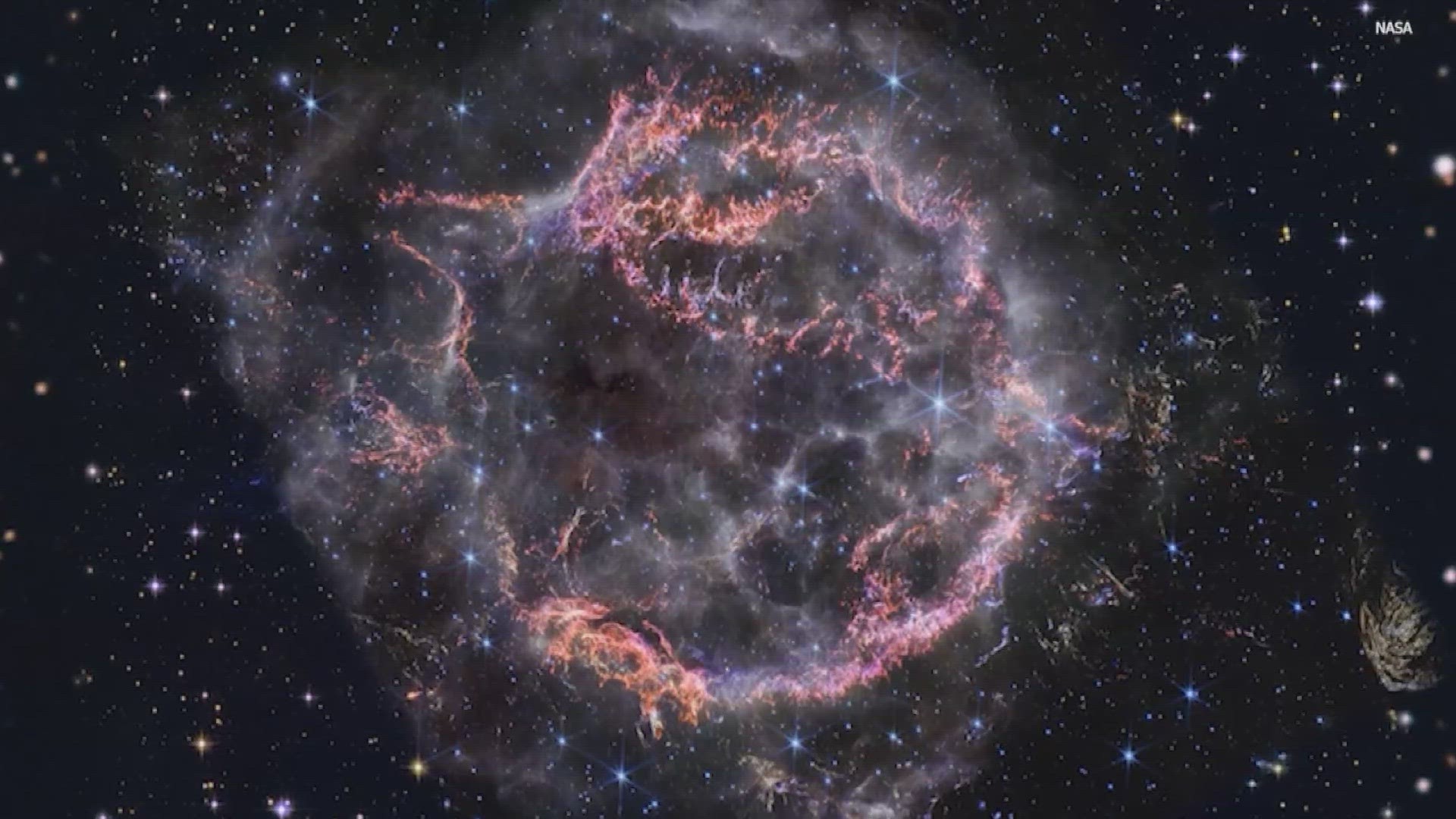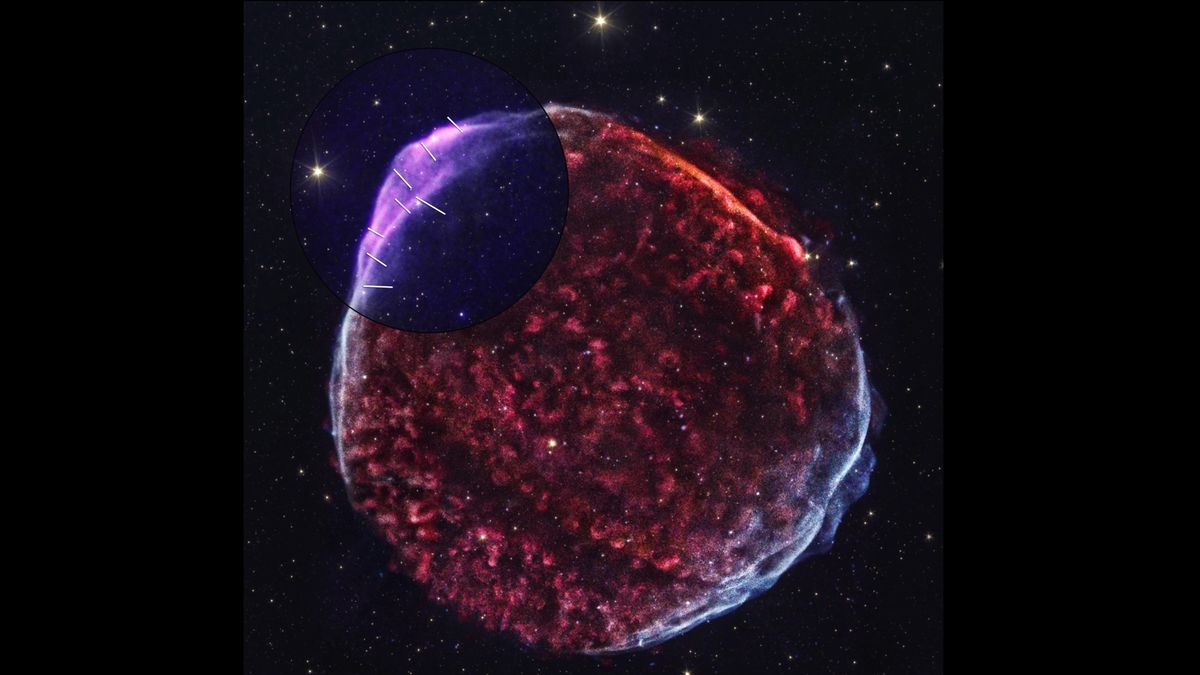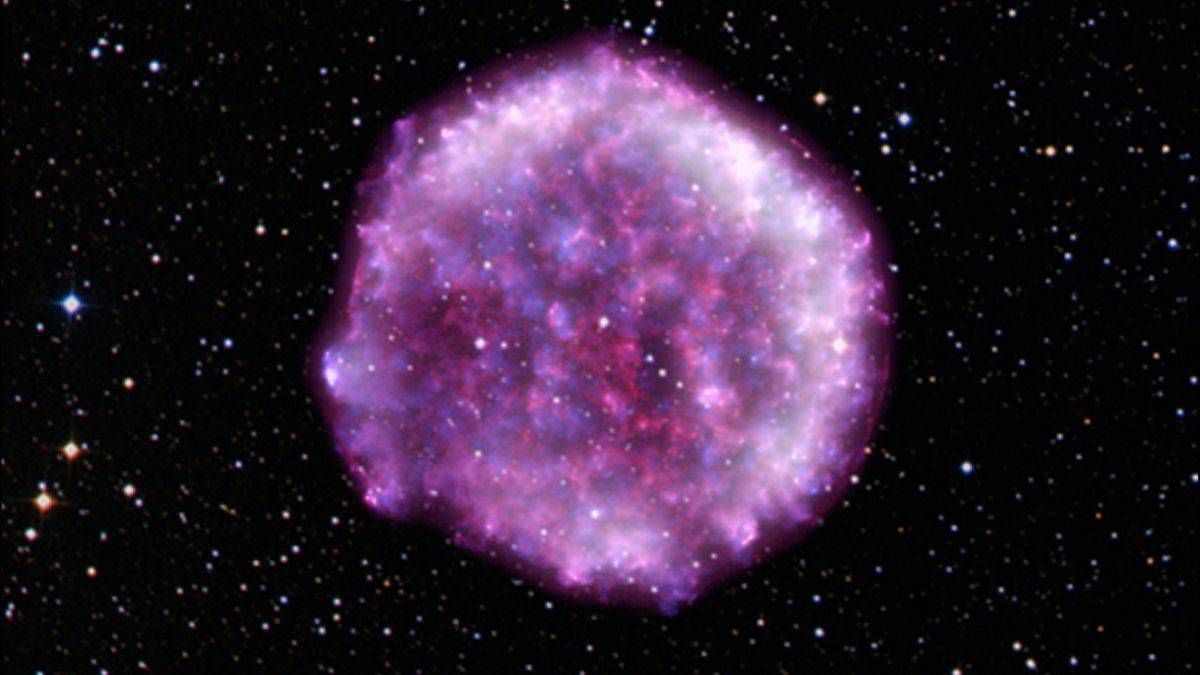A supernova is the explosive death of a massive star, while a nebula is a cloud of gas and dust in space. Supernovae release immense energy, shaping surrounding nebulae into new stars and planets.
Supernovae and nebulae play significant roles in the life cycle of galaxies. These cosmic events contribute to the formation and distribution of elements essential for the existence of life in the universe. Both phenomena are studied by astronomers to deepen our understanding of the cosmos and how celestial bodies interact and evolve over time.
Supernovae and nebulae showcase the dynamic and interconnected nature of the universe, creating awe-inspiring spectacles that fuel scientific curiosity and exploration.

Credit: www.redbubble.com
2. What Is A Supernova?
2. What is a Supernova?
A supernova is a powerful and explosive event that occurs in the final stages of a star’s life cycle.
2.1 Types Of Supernovae
- A Type I supernova is caused by a white dwarf star accumulating matter from a companion star, leading to a sudden explosion.
- A Type II supernova occurs when a massive star runs out of nuclear fuel and collapses under its gravity.
2.2 Formation Of Supernovae
Sun-sized stars end their life cycle in a planetary nebula, while massive stars go through a supernova explosion.
| Star Size | End Stage |
|---|---|
| Sun-sized | Planetary Nebula |
| Massive | Supernova Explosion |
Supernovae play a crucial role in dispersing heavy elements into the universe, enriching cosmic material.

Credit: www.wthr.com
3. What Is A Nebula?
In the vast expanse of the universe, nebulae are among the most captivating and enigmatic celestial phenomena. Understanding what nebulae are can shed light on the intrigue they hold in the cosmos.
3.1 Types Of Nebulae
Nebulae come in different forms, each with its own unique characteristics:
- Emission Nebulae: Glowing clouds of gas and dust that emit light.
- Reflection Nebulae: Shimmering clouds that reflect the light of nearby stars.
- Dark Nebulae: Dust clouds that obscure light, creating dark patches in the sky.
3.2 Formation Of Nebulae
Nebulae are born from the remnants of dying stars or the gravitational collapse of interstellar clouds:
- Supernova Remnants: Explosions of massive stars that scatter gas and dust into space.
- Planetary Nebulae: Shed outer layers of aging stars, creating colorful shells of gas.
- H II Regions: Ionized hydrogen gas clouds where new stars are born.
4. Differences Between Supernovae And Nebulae
Supernovae and nebulae are both fascinating astronomical phenomena, but they differ in various aspects. Let’s explore the characteristics that set them apart.
4.1 Composition
Astrophysically, supernovae and nebulae have distinct compositions. Supernovae are the explosive deaths of massive stars, resulting in a tremendous release of energy. They consist primarily of elements like hydrogen, helium, and traces of heavier elements like carbon, oxygen, and iron.
On the other hand, nebulae are vast clouds of gas, dust, and plasma, predominantly composed of hydrogen and helium. These celestial bodies are often known as the “birthplaces of stars,” as they provide the necessary materials for the formation of new stellar systems.
4.2 Energy Emissions
Energy emissions play a crucial role in differentiating supernovae from nebulae. Supernovae release an astonishing amount of energy during their explosive events, often exceeding that of an entire galaxy. These energetic explosions outshine stars within the galaxy and can be visible from immense distances.
Nebulae, on the other hand, emit energy through processes like fluorescence, scattering, and heat radiation. They showcase a vibrant display of colors and patterns due to these energy emissions, making them a captivating sight for stargazers and astronomers.
4.3 Lifespan
The lifespan of supernovae and nebulae is another area of distinction. Supernovae have relatively short-lived existences, with the entire process from the initial explosion to the fading of the remnant typically lasting a few weeks to months. However, their far-reaching impact on galactic evolution makes them of great significance to the universe.
Nebulae, on the other hand, have much longer lifespans, lasting for millions or even billions of years. These enormous clouds of interstellar matter gradually transform, giving rise to the formation of new stars, planetary systems, and even fostering the conditions for life to emerge within galaxies.
4.4 Size And Structure
In terms of size and structure, supernovae and nebulae present notable disparities. Supernovae are compact remnants resulting from the explosive deaths of massive stars. These remnants can either form a neutron star or a black hole, occupying a relatively small space in the vastness of the universe.
Nebulae, on the other hand, exhibit immense dimensions, spanning hundreds of light-years across. They come in various shapes and structures, including emission nebulae, reflection nebulae, and planetary nebulae, each offering unique visual characteristics that intrigue stargazers and astronomers alike.
In summary, the differences between supernovae and nebulae can be attributed to their composition, energy emissions, lifespan, and size and structure. While supernovae are explosive events marking the end of massive stars, nebulae are cosmic nurseries fostering the birth and evolution of new stars and planetary systems. Understanding these disparities enhances our understanding of the dynamic and diverse nature of the universe.
5. The Startling Similarities
When it comes to exploring the mysteries of the universe, the comparison between supernovae and nebulae offers a fascinating glimpse into the cosmic wonders. While these celestial marvels may seem vastly different, there are surprising similarities that highlight the interconnected nature of the cosmos.
5.1 Stellar Origins
Both supernovae and nebulae have origins linked to the lifecycles of stars. Stellar origins of supernovae involve the explosive culmination of massive stars, where the immense gravitational forces lead to cataclysmic events. On the other hand, nebulae are birthplaces of stars, formed from vast clouds of gas and dust that coalesce under the influence of gravity, providing the nurturing grounds for the birth of new stars.
5.2 Role In Galaxy Evolution
The role in galaxy evolution for both supernovae and nebulae is pivotal. Supernovae play a crucial part in dispersing heavy elements forged within stars, enriching the interstellar medium with crucial building blocks for new star formation and planetary systems. Similarly, nebulae contribute to the enrichment of galaxies by seeding the cosmos with the raw materials necessary for the formation of successive generations of stars, planets, and, potentially, life.
6. Impact On The Universe
In the vast expanse of the universe, supernovae and nebulae play crucial roles in shaping the cosmic landscape. These phenomena have a significant impact on the universe, influencing the formation of new stars, planets, and galaxies. Understanding their respective roles and significance is fundamental to unraveling the mysteries of the cosmos.
6.1 Supernovae’s Role
Supernovae are cataclysmic events marking the explosive end of a massive star’s life cycle. The energy released during a supernova can outshine an entire galaxy for a brief period, disseminating heavy elements crucial for the formation of planetary systems. This process also disperses these elements into the interstellar medium, enriching it and paving the way for the birth of new celestial bodies.
6.2 Nebulae’s Significance
Nebulae are vast clouds of gas and dust, often illuminated by nearby stars or the remnants of supernovae. These cosmic nurseries serve as the birthplaces of stars, providing the raw materials necessary for their formation. Nebulae also serve as the stomping grounds for the creation of planetary systems, including our own solar system, by condensing matter and facilitating the evolution of celestial bodies.
7. Observing Supernovae And Nebulae
Explore the fascinating world of supernovae and nebulae, contrasting their dynamic beauty and distinct characteristics. Witness the explosive demise of a star versus the ethereal glow of interstellar clouds, each offering unique insights into the universe’s enigmatic nature.
Observing supernovae and nebulae, two fascinating cosmic events, requires the use of specific techniques, instruments, and scientific advancements. In this section, we will explore these techniques and instruments commonly utilized in the study of these astronomical phenomena. We will also discuss some recent discoveries that have deepened our understanding of both supernovae and nebulae.
7.1 Techniques And Instruments
Scientists employ various techniques and instruments to observe and gather data about supernovae and nebulae. The following table provides an overview of some commonly used techniques and their corresponding instruments:
| Technique | Instrument |
|---|---|
| Optical observation | Telescopes (e.g., Hubble Space Telescope) |
| X-ray observation | X-ray telescopes (e.g., Chandra X-ray Observatory) |
| Radio observation | Radio telescopes (e.g., Very Large Array) |
| Infrared observation | Infrared telescopes (e.g., Spitzer Space Telescope) |
These techniques and instruments help scientists capture valuable data and images that allow for a comprehensive analysis of supernovae and nebulae. Optical observation, for example, enables us to study the visible light emitted by the celestial objects, while X-ray and radio observations offer insight into their high-energy emissions. Infrared observation, on the other hand, helps in the detection of objects that are not easily visible in the visible spectrum.
7.2 Recent Discoveries
Recently, several exciting discoveries have been made regarding supernovae and nebulae, shedding new light on their nature and characteristics. Some notable discoveries include:
- Astronomers using the Hubble Space Telescope uncovered a previously hidden supernova remnant, providing valuable information about the explosion’s aftermath and its impact on surrounding matter.
- Scientists studying the Crab Nebula using radio telescopes discovered a pulsar at its center, offering insights into the formation and evolution of these mysterious objects.
- Advancements in data analysis techniques have allowed researchers to identify multiple supernova candidates in distant galaxies, contributing to our knowledge of the prevalence and behavior of these explosive events.
- The detection of complex organic molecules in nebulae, such as the Orion Nebula, has raised intriguing questions about the potential for life-sustaining conditions in other parts of the universe.
These recent discoveries highlight the ongoing progress in our exploration and understanding of supernovae and nebulae. They provide valuable clues about the life cycles of stars, the distribution of elements in the universe, and the potential for habitable environments beyond our own planet.
8. The Eternal Beauty
8.1 Awe-inspiring Images
Experience the majesty of Supernovae and Nebulae through stunning visuals.
8.2 Inspiring Artists And Scientists
Discover how Supernovae and Nebulae have captivated creative minds and scientific intellects alike.

Credit: www.space.com
Frequently Asked Questions Of Supernova Vs Nebula
What Is A Supernova?
A supernova is a powerful, explosive event that occurs at the end of a star’s life cycle. During a supernova, a massive burst of energy is released, leading to a dramatic increase in brightness and the creation of elements.
How Are Nebulas Formed?
Nebulas are formed from the remnants of dying stars and the surrounding interstellar medium. As a star reaches the end of its life, it may shed its outer layers, creating a cloud of gas and dust. Over time, this material can coalesce to form a nebula.
What Are The Differences Between A Supernova And A Nebula?
The main difference is that a supernova is an explosive event that marks the end of a star’s life, while a nebula is a cloud of gas and dust formed from the remnants of dying stars. Supernovae release massive amounts of energy, whereas nebulas are sites of new star formation.
What Is The Significance Of Supernovae And Nebulas In Our Universe?
Supernovae play a crucial role in the creation and dissemination of heavy elements in the universe, enriching interstellar space with elements critical for the formation of planets and life. Nebulas serve as nurseries for the birth of new stars, shaping the evolution of galaxies and cosmic structures.
Conclusion
From the explosive beauty of a supernova to the captivating allure of a nebula, the universe never ceases to amaze us. These cosmic phenomena offer us a glimpse into the vastness of space and the immense power it holds. Whether it’s the stunning burst of light from a dying star or the swirling clouds of gas and dust, supernovas and nebulas truly showcase the wonders of our universe.
We are fortunate to have the opportunity to explore and study these celestial marvels, deepening our understanding of the cosmos and igniting our sense of curiosity.



